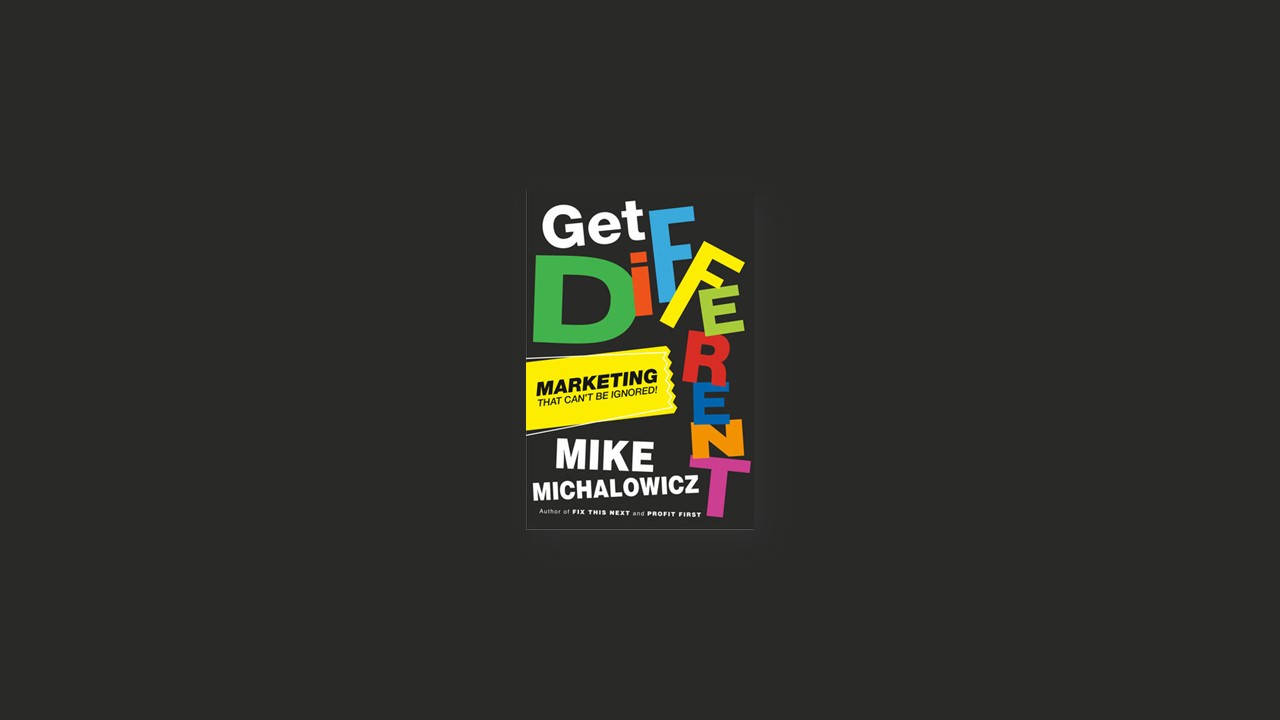Great Offers Need Different Marketing
The simple truth is marketing happens in milliseconds, not months. According to Time magazine, the average website holds visitors’ attention for a mere fifteen seconds. Instagram reports people spend less than ten seconds on a post. And what about more tactile marketing? I’ll bet you riffle through your junk mail at warp speed.
Try this. Right now, blink as fast as you can. That blink you just did, that took longer than a tenth of a second. The average blink is—get this—two hundred and fifty milliseconds. According to The Christian Science Monitor, thoughts can be spawned and acted upon in less than one hundred and fifty milliseconds. In other words, it takes longer to blink than it does to cognitively notice something and consider what to do with it. The takeaway? Successful marketing happens in a mere blink. Your prospect blinks and moves on or, if you do it right, stays. You need to win the blink.
The key to successfully marketing in milliseconds is simple: Be different so that people must take notice. Be different enough that the hardwired part of the human brain forces the prospect to contemplate and consider what they are seeing.
Trying to do the same marketing as everyone else, over and over again, just better, will make you super frustrated. It’s no wonder so many businesses think marketing is a waste of time and money. Who would be good at riding that merry-go-round? No matter which seat you hop on, they are all just painted horses on poles, going around in circles—going nowhere.
Do whatever it takes to remember this for the rest of your life… Better is not better. Different is better.
The Dad Marketing Framework
We’re still cave people when it comes to mental processing. Our brains still filter out the familiar and only take notice when something is different. This is why it is vital that you stop marketing the same way everyone else in your industry does and start “getting different.”
We avoid the threats, grab the opportunities, and tune out the irrelevant—remember, it’s all about finding dinner and not being dinner. To market effectively to our ideal customers, we need to make sure that we get noticed, and that our ideal customers view what we do to get noticed as an opportunity, not a threat. But our work doesn’t end there. Getting noticed by the right people takes us only so far. We need them to take action. This is the foundation of the three-step DAD Marketing Framework.
Here’s how the DAD breaks down:
DIFFERENTIATE! Do different to get noticed . . .
You’ve already learned why different works. This first step in the framework is to identify a marketing approach that stands out in a sea of sameness. What will make your prospect’s caveman mind stop and pay attention? How can you engage them during the first milliseconds?
ATTRACT! . . . in a way that attracts your ideal prospects . . .
Next, ensure that your approach will appeal to the people you want to serve, not turn them off. How will you establish your marketing as an opportunity they will consider instead of a threat they will avoid?
DIRECT! . . . and directs them to act.
Finally, your strategy must compel your ideal prospects to take a specific action you desire. Does the prospect see the reward of doing what you ask as greater than the risk of taking that action? And will their compliance with your directive help you achieve your marketing goals?
To sum up the DAD: Do different to get noticed in a way that attracts your ideal prospects and directs them to act. That’s it. That’s the framework. It’s simple, yet powerful. When you follow it, you will land new prospects. Every. Single. Time.
#1 Try a Different Medium
One of the easiest ways for you to differentiate your marketing is to deliver it using a different medium—different from what you already use, and different from the established norms in your industry. Who says you have to do Facebook ads? Or direct mail? Or video? No one, that’s who. Okay, most people in your industry say that. But no one who gets it does.
Of course, you’ll have to consider if your Target One Hundred will actually see your marketing when you change mediums. Not all medium shifts will work. For example, coupons sent in the mail to C-suite executives probably won’t get to them, although their assistants may take note. Likely, though, they will be tossed in the garbage before they even reach the assistants’ desks.
Take this baby step and ask yourself, “What if I simply changed the medium I use to deliver marketing?” Sometimes, that simple shift can make all the difference.
To really jog your noggin, here is a sample list of some marketing mediums:
Videos, signs, brochures, direct mail, influencer marketing, print, packaging, outdoor advertising, indoor advertising, phone, website, pay-per-click, search engine marketing, social media, affiliate, email, television, speaking, referral networking, facilitated word of mouth, trade shows, conferences, access point marketing,*
PR, listings, endorsements—the list goes on and on.
Simply try a marketing medium that no one else in your industry typically does. If everyone is sending text emails, send video emails. If they don’t do direct mail, you should. If they do, do it in a different way. Different happens when you do the atypical.
#2 What Attraction Influencers Will You Use?
The Attract stage of the DAD Marketing Framework is designed to hold your prospect’s attention. You’ve got to keep winning them over, again and again. The second they deem you uninteresting, you are done. So, to keep them engaged and build enough comfort for them to take the next action, you’ll need to consider which Attraction Influencers will do the job.
Authority—This is when we have heightened trust for an individual or brand because we see them as a leader in their category. Our default belief is that they have knowledge, expertise, capabilities, or influence greater than ours, and we trust that their opinion relative to their respective space is superior to our own.
Trusted source—This is a person or brand that we already have confidence in and will follow. They are not necessarily in an authority position, but we have had past experiences with them. We have familiarity with a trusted source and can predict how our experience with them will pan out.
Repetition—The more we hear a recurring message, the more it attracts. If we repeat the message in our minds, we start to feel as though we came up with it. When we notice the same thought that we had articulated by someone else, or repeated in marketing, we are drawn to it.
Social significance—We seek to be important and relevant to our community. When something elevates our standing in any capacity—makes us stronger, healthier, cooler, funnier, better—we are attracted to it.
Alignment—We are attracted to what we already know and feel. Alignment validates us, as we are. An extension of this is purpose/righteousness, which speaks to our purpose and belief system. This plays into confirmation bias—our tendency to favor things we already believe and discredit or ignore things we don’t.
Safety—We seek safety and protection from physical harm or discomfort, from financial struggle, and from rejection from our community and our ideology. We are attracted to messaging that makes us feel safe in any of these areas. For
Comfort—A variant of Safety, in which we have an aversion to loss and are attracted to maintaining what we have. We are attracted to things that will assure we can sustain and expand elements of our life and work that we already enjoy.
Expansion—We like to expand the things we already like, own, and believe. People who value their nice car will be attracted to a nicer car; people who value their privacy will be attracted to gaining even more privacy, and so on.
Belonging—We value being part of a community, being loved by our community, and contributing to our community. Messages that help us feel a sense of belonging are attractive to us.
Health—We are attracted to things that deliver health to us—unless we’re talking about gluten-free muffins. Or a three-hour spin class. This can be physical health, sexual health, mental health, and more. If something improves our longevity, strength, endurance, and overall well-being, we are attracted to it.
Relief—Things that offer us permanent or temporary relief from physical or emotional pain are compelling. Humans are wired to gain pleasure and avoid pain, and if both are happening at the same time, the avoidance of pain is usually the winner. Consider that it could also be relief from something simple, such as sitting in traffic too long.
Beauty—Though no single definition exists, we are, nonetheless, attracted to that which we find pleasing to the senses. When you know how your prospects define beauty, you can amplify it by sharing something that could be viewed as more beautiful.
Esteem—We are attracted to things and messages that make us feel valued and recognized. We strive to be recognized for being important and relevant. Esteem is similar to belonging, but with an emphasis on specific importance. So, for example, a prestigious award or accolade, or a special distinction.
Considering what you know about your ideal customer—their values, preferences, and habits—which Attraction Influencers do you think would speak most clearly to them?
#3 Your Directive Can Be Simple
Your singular call to action can be as simple as “come get some free ice water.” In fact, the simpler the better. You could keep it so simple, you don’t even need words. To get more people to use the stairs rather than the adjacent escalator, the city of Brussels made the stairs musical. They painted them to look like black-and-white piano keys and rigged each step to play a different note each time someone stepped on them. No signs urging people to choose the stairs. No messages about health or exercise. Just a set of painted, musical stairs that got noticed, and engaged people who wanted to have fun, compelling them to take the stairs. The DAD was built right in. Musical steps are noticeable (different), fun (attractive), and actionable (directive), all without saying a word.


